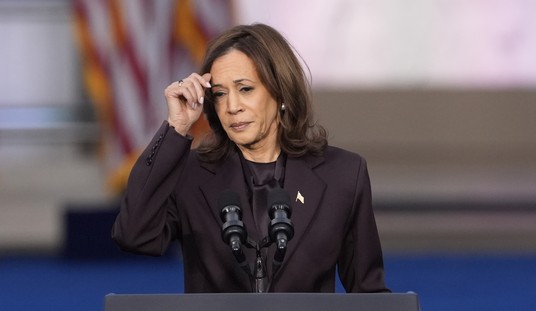It’s been a couple of weeks since the infamous “Signalgate” controversy erupted. Just as most Americans had moved on from this non-scandal, we have finally learned how Jeffrey Goldberg, the editor of The Atlantic, got into the encrypted group chat on Signal in the first place.
For sure, this story was overblown from the get-go. Goldberg clearly oversold the chat as containing classified war plans, though a review of the chat, which Goldberg eventually published, proved the chat to be a real nothingburger. That said, the mainstream media quickly pounced on the story, and Democrats used the incident as a pretext for calling for Secretary of Defense Pete Hegseth and National Security Advisor Mike Waltz to resign.
So, how did Goldberg get invited onto the chat? It all goes back to when Goldberg was attempting yet another hit piece during the 2024 campaign. Goldberg, the Atlantic's editor and chief Trump antagonist, had been reaching out to various officials in his usual attempt to smear the president. This led to a series of forwarded communications that ultimately resulted in his contact information being caught in an automated iPhone update.
According to an exclusive report from The Guardian, an internal White House investigation found that “Waltz’s phone had saved Goldberg’s number as part of an unlikely series of events that started when Goldberg emailed the Trump campaign last October.”
According to three people briefed on the internal investigation, Goldberg had emailed the campaign about a story that criticized Trump for his attitude towards wounded service members. To push back against the story, the campaign enlisted the help of Waltz, their national security surrogate.
Goldberg’s email was forwarded to then-Trump spokesperson Brian Hughes, who then copied and pasted the content of the email – including the signature block with Goldberg’s phone number – into a text message that he sent to Waltz, so that he could be briefed on the forthcoming story.
Waltz did not ultimately call Goldberg, the people said, but in an extraordinary twist, inadvertently ended up saving Goldberg’s number in his iPhone – under the contact card for Hughes, now the spokesperson for the national security council.
The White House explained that a number was mistakenly saved during a “contact suggestion update” on then-Rep. Michael Waltz’s iPhone. This feature automatically adds a new number to an existing contact if the phone’s algorithm detects a possible connection. The error went unnoticed until March, when Waltz tried to add a contact to a Signal group chat but accidentally included the number of Jeffrey Goldberg instead. This led to Goldberg being added to a sensitive message chain discussing U.S. plans for strikes against the Houthis.
President Trump chose not to fire Waltz partly because he didn’t want The Atlantic and the broader media to take satisfaction in pushing out a top cabinet member so soon into his second term. Trump was also reassured by the findings of an internal investigation. “Waltz also appears to have also engendered some sympathy from inside Trump’s orbit over the group chat because the White House had authorized the use of Signal, largely because there is no alternative platform to text in real time across different agencies,” the report explained.
While the media clamored for a dramatic firing, Trump understood that removing a valuable team member over a technical error would only play into the left’s narrative.
Want the real story behind media hit jobs like "Signalgate"? Join PJ Media VIP for exclusive analysis and insider perspectives that expose how the mainstream media manufactures fake controversies. Our uncensored coverage reveals what's really happening in the Trump administration. Don't let biased reporting fool you—join PJ Media today with code FIGHT for 60% off and support authentic journalism that tells the truth!










Join the conversation as a VIP Member